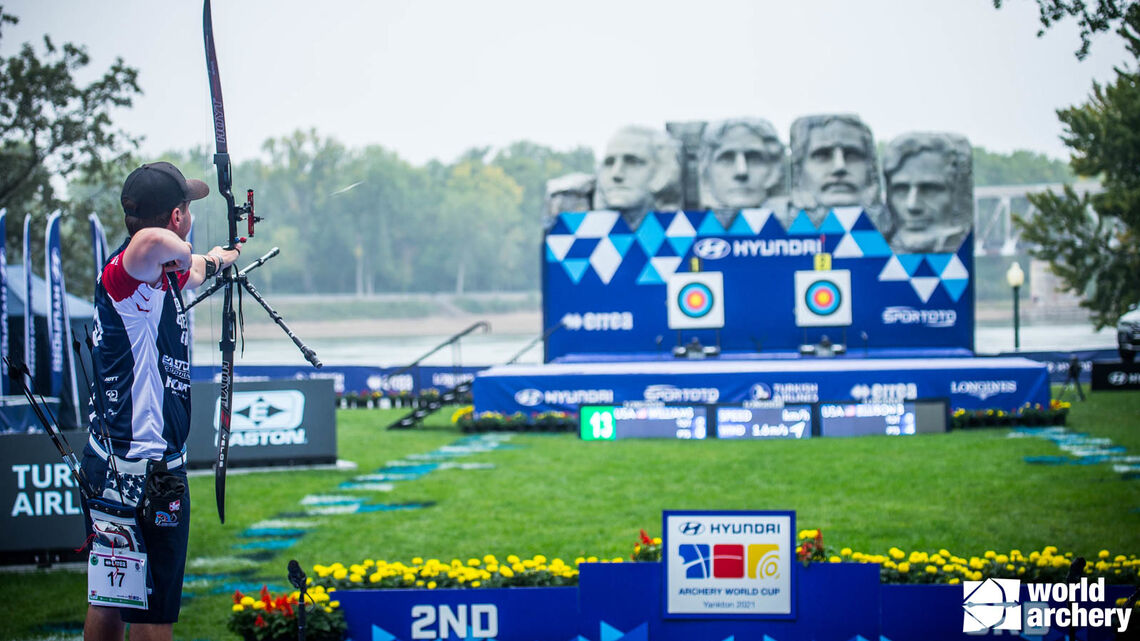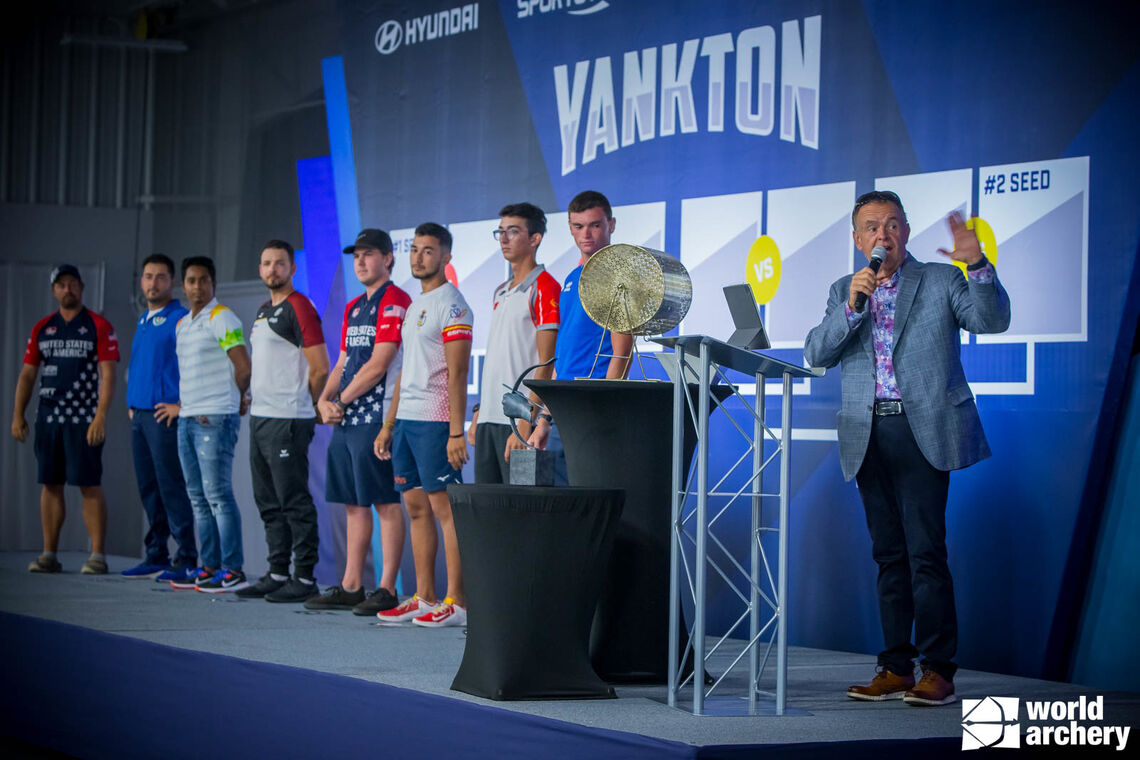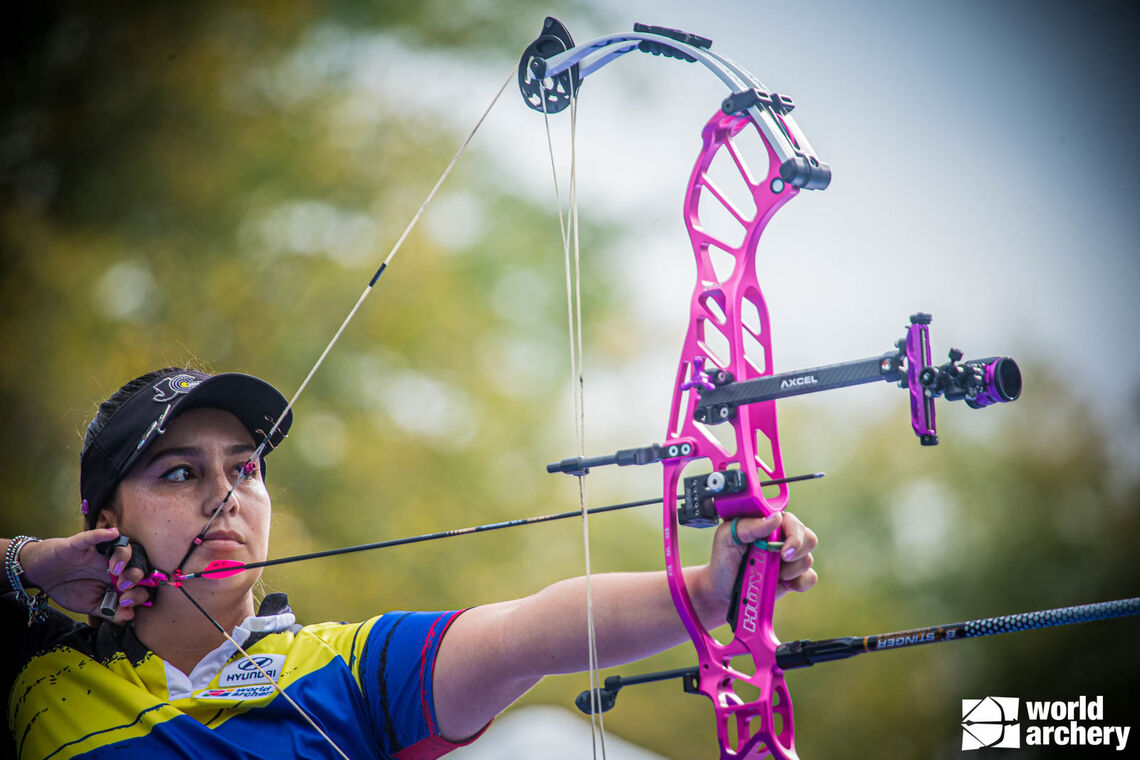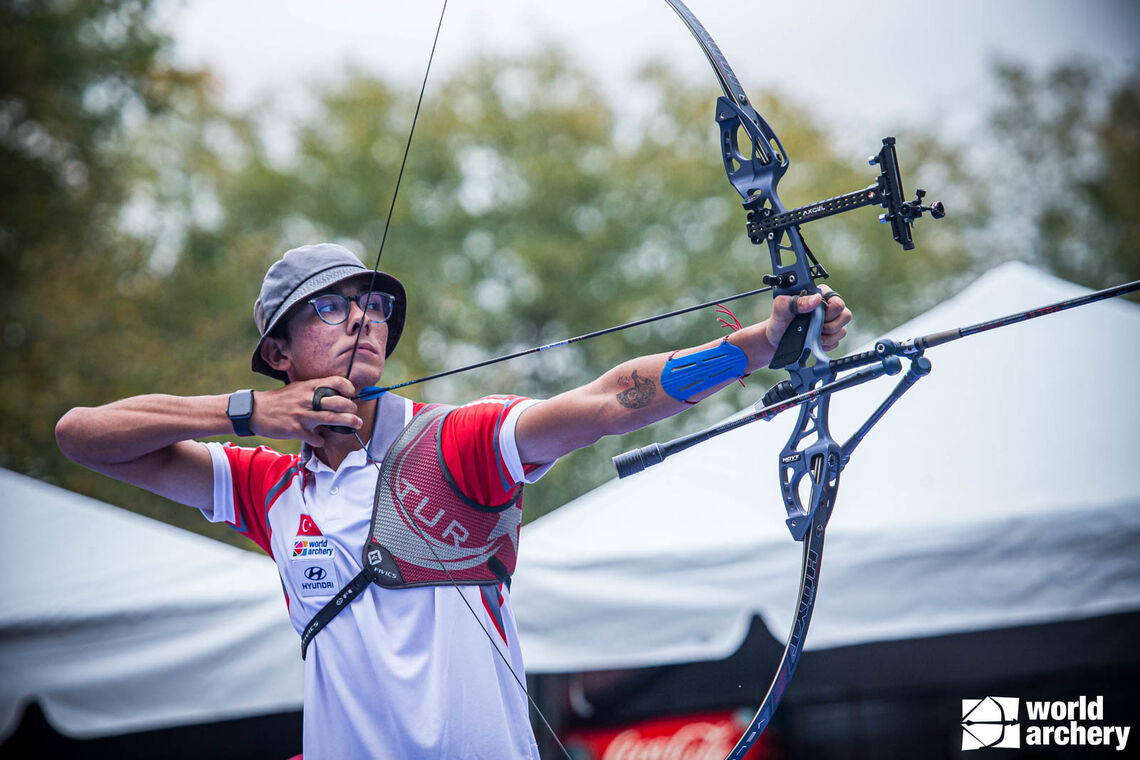Beginners guide to the Tlaxcala 2022 Hyundai Archery World Cup Final

The Hyundai Archery World Cup is archery’s annual elite international competition circuit. It consists of four stages – except in Olympic years, when it’s three – and a grand finale, to which only the season’s best athletes are invited.
This year’s tour stopped in Antalya (Turkey) in April; Gwangju (Korea) in May; Paris (France) in June; and Medellin (Colombia) in July. Just one event remains – the 2022 Hyundai Archery World Cup Final, which is taking place on 15-16 October in Tlaxcala, Mexico.
Eight archers in each of the four international competition categories – recurve men, recurve women, compound men and compound women – are invited to the event.
Athletes qualify either by winning a stage or by accruing enough ranking points with high finishes to be selected as a points qualifier from the Hyundai Archery World Cup Ranking. One spot in each of the four categories is reserved for the host nation which, this year, is Mexico.
The competition format is simple. It’s a bracket, starting from the quarterfinals.
Archers are assigned their first opponent in a random draw – and whoever wins three matches in a row, first quarterfinal and then semifinal and then final, earns 28,000 CHF in prize money and the coveted title of Hyundai Archery World Cup Champion.

Day-by-day
Thursday 13 October: The match draw will be streamed live from Tlaxcala’s metropolitan theatre two days before the finals actually take place.
The top two seeds in each event, which are the two archers at the top of the Hyundai Archery World Cup Ranking, are placed at opposite ends of the draw. The remainder of the places in the bracket are filled by randomly selecting the names of the other qualified archers.
Friday 14 October: Our first glimpse of the finalists competing in the arena. Every archer gets 30 minutes to practice on the field during familiarisation.
Saturday 15 October: The compound women open the event, entering the arena from 10h00 local time. We should have our first Hyundai Archery World Cup Champion at about midday. The compound men’s event follows from 14h00 to 16h00. (Compound day.)
Sunday 16 October: Same schedule as compound finals day but for the recurves. Women in the morning, from 10h00; then men in the afternoon, starting at 14h00. Both days of finals are broadcast live worldwide and streamed on the Olympic Channel in territories without a linear network. (Recurve day.)
Line-up
The two archers listed in bold are the top seeds. The remainder will participate in the random match draw.
| Recurve men | Recurve women | Compound men | Compound women |
|---|---|---|---|
Kim Woojin Korea Korea | Choi Misun Korea Korea | Mike Schloesser Netherlands Netherlands | Ella Gibson Great Britain Great Britain |
Miguel Alvarino Spain Spain | An San Korea Korea | Mathias Fullerton Denmark Denmark | Sara Lopez Colombia Colombia |
Kim Je Deok Korea Korea | Katharina Bauer Germany Germany | Jean Philippe Boulch France France | Alejandra Usquiano Colombia Colombia |
Mauro Nespoli Italy Italy | Kuo Tzu Ying Chinese Taipei Chinese Taipei | Jean Pizarro Puerto Rico Puerto Rico | Dafne Quintero Mexico Mexico |
Mete Gazoz Türkiye Türkiye | Bryony Pitman Great Britain Great Britain | Nicolas Girard France France | Lisell Jaatma Estonia Estonia |
Marcus D’Almeida Brazil Brazil | Peng Chia-Mao Chinese Taipei Chinese Taipei | Braden Gellenthien USA USA | Kim Yunhee Korea Korea |
Brady Ellison USA USA | Agu Utano Japan Japan | James Lutz USA USA | Tanja Gellenthien Denmark Denmark |
Jesus Flores Mexico Mexico | Alejandra Valencia Mexico Mexico | Miguel Becerra Mexico Mexico | Andrea Becerra Mexico Mexico |
Winningest archers
The Hyundai Archery World Cup was launched (incidentally in Mexico) in 2006. Of the nine archers to have won the circuit more than once, five will compete in Tlaxcala.
Six trophies
- Sara Lopez, Colombia (2014, 2015, 2017, 2018, 2019, 2021)
Five trophies
- Brady Ellison, USA (2010, 2011, 2014, 2016, 2019)
Three trophies
- Ki Bo Bae, Korea (2012, 2016, 2017)
- Kim Woojin, Korea (2012, 2017, 2018)
- Mike Schloesser, Netherlands (2016, 2019, 2021)
Two trophies
- Braden Gellenthien, USA (2012, 2017)
- Sergio Pagni, Italy (2009, 2010)
- Jamie van Natta, USA (2008, 2012)
- Yun Ok Hee, Korea (2010, 2013)

Equipment
Archers at the Hyundai Archery World Cup compete in either the recurve or compound events, which correspond to the type of bow they use.
Recurve bows are the modern evolution of traditional bows. The limbs curve away from the archer at the top and bottom of the bow, which is what gives the ‘re-curve’ its name. The bows feature sights and stabilisers that help the archer to aim and release an arrow accurately.
The recurve events are currently included on the programme of the Olympic Games.
Compound bows use a system of pulleys and cables, making them a more mechanically efficient and inherently accurate type of bow. The strength required to pull the bow is at its maximum at the start of the process, decreasing the further the bow is drawn back, which makes it easier to hold while aiming. Archers also use mechanical release aids and sights with magnified lenses to further increase accuracy.
World Archery applied for compound’s inclusion on the LA28 Olympic programme earlier this year.

Competition format: Recurve
Recurve archers shoot over a distance of 70 metres at targets measuring 122 centimetres in diameter, aiming to hit a 10-ring measuring just 12.2 centimetres in diameter – or about the size of an orange. Recurve matches are decided using the set system.
The goal is to accrue six set points. A set consists of three arrows and the maximum score is 30 points. At the end of each set, the archer with the highest combined arrow score is awarded two set points. Both archers receive one set point if the score is tied.
An archer or nation can win a match quickly – with a score of 6-0 or in ‘straight sets’ – by winning three sets in a row.
If a match is tied at 5-5 after five sets then the match is sent to a tiebreak or shoot-off, in which the archer who shoots their arrow closest to the centre of the target is declared the winner.
Competition format: Compound
Compound archers shoot over a distance of 50 metres at targets measuring 80 centimetres in diameter, with the four outer rings removed, aiming to hit a 10-ring measuring just eight centimetres in diameter. Compound matches are decided using cumulative scoring.
The goal is to acquire the most number of points over a certain number of arrows. Matches last for 15 arrows and are split into five ends of three arrows. The maximum score is 150 points and each match takes about 15 minutes.
If a match is tied at the end of the regulation number of arrows then the match is sent to a tiebreak or shoot-off, in which the archer who shoots their arrow closest to the centre of the target is declared the winner.










